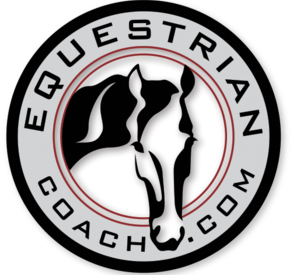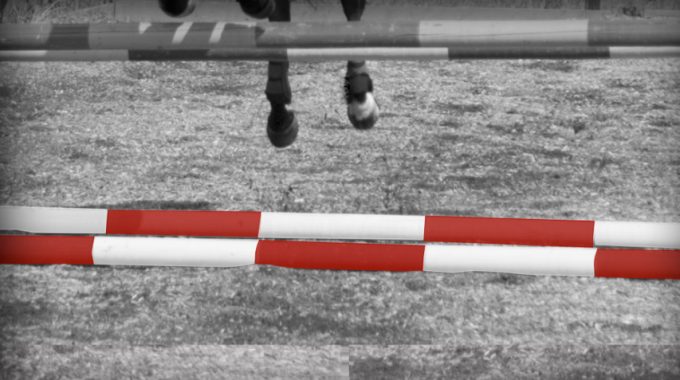Natasha Traurig Ferrara
- 14 Feb, 2024
- 0 Comments
- 5 Mins Read
Tips to Improve a Young Horse’s Form Over Fences
Submitted by member: Jen
I have a cute 6-year-old warmblood—16’2 gelding, big stride, scopey, lazy type, and a beautiful mover. He seems at lower jumps (3′- 3’3) to almost canter over top. I also noticed it looks like he is just jumping up with front end (it looks like he is chipping). My trainer says to make the oxers wider to help him to get across or give him a bigger ground line. Since he is young, I let my trainer do most of the jumping. I want him to tuck in front, yet have a bascule and go across. He kinda pops up and canters over.
Thoughts?
Jen.
Answer by: Natasha
Hi Jen,
I would love to see a video for reference and better understanding. Please feel free to follow up by sending in a video of your six-year-old that points out some of these questions and concerns you have. I primarily focus on the training and development of young horses. With that, I think it’s important to state that every young horse progresses a bit differently—some develop slowly and may take longer to find their form, while others are quick to mature. So, keep that in mind as you move forward in your training, and give your young horse plenty of patience and time to grow, understand, learn, and evolve his jumping form. I’ve ridden four-year-olds that didn’t jump spectacular until they were seven or eight, and I’ve shown six-year-olds that, well, peak at six!
From what you wrote, it sounds like part of the issue is that he jumps a bit flat and lands shallow. Your trainer suggests pulling the ground line out and widening the oxers to teach him to get across the jump. I would add to that by ramping your oxers—making the back rail a couple of holes higher than the front rail—to encourage his bascule in the air and to help with his front end. I suggest keeping the fences small with this exercise. You always want to keep the training exercises inviting and encouraging for a young horse so that they learn from a good experience.
Here are some videos to watch on improving your horse’s form and development:
Another issue you point out is that he seems to just canter over the fences without giving much effort to his form in the air. Again, some youngsters just take a little more time to physically develop a nice, round jump in the air. To help encourage this, you could experiment with very soft, inviting v-pole exercises over small fences. I strongly recommend you do this exercise under your trainer’s supervision to make sure the v-poles are placed correctly to benefit your horse’s learning experience. When used correctly, v-poles can improve your horse’s shape and form in the air.

Here is an example of v-poles over a vertical. I suggest keeping a nice ground line and the fence small until your horse is comfortable with the exercise. I would not get complicated or make this exercise advanced for your young horse. Keep it simple and straightforward to encourage him to jump rounder and have a better shape in front.
Remember that cavaletti work is incredibly beneficial to your young horse’s physical development and athleticism. Using cavaletti is an excellent way to train your horse without overjumping him and dulling his enthusiasm. To help increase your horse’s athleticism and reaction to the fence, you can incorporate trot and canter cavaletti exercises frequently. Trotting a line of three to four cavaletti can build shoulder mobility and hind end engagement. (Just be sure to start with one or two to begin until he is used to trotting a series.) Set each cavaletti 4ft – 5ft (depending on your horse’s stride, I find most horses like 4’6”) from each other for trot work. Advance this exercise at the canter by setting a series of cavaletti bounces. Start with two and increase to three or five cavaletti in a row to canter through. Each cavaletti should be set at about 10ft apart for the canter. This is a simple yet effective exercise to keep your horse’s interest and develop better reaction timing and engagement at the canter.
Watch this for some inspiration and guidance:
A final consideration is simply on flatwork. I think proper flatwork is essential in developing a young horse’s balance, top line, hind end, and overall physical strength. This, in return, will help you over fences. Spend a solid 15 minutes at the beginning of your work encouraging your horse to stretch and lengthen his top line through plenty of engaged work at the walk and at the trot, allowing your horse to stretch his neck long and low, lift his withers and back, and bring his hind quarters under. As you progress in your ride, the focus should be on rhythm, balance, and straightness with your young horse. And, through this, you can advance to accordion transitions and greater engagement in your horse’s gaits.
Here are a few videos to watch on flatwork:
I hope this provides some insight and helps you progress your horse’s training. For further inspiration, and as your horse gets older, we offer many educational videos on gymnastics that you can incorporate into your future training to help improve your horse’s athleticism, balance, and form. Please feel free to email in again with a video of your horse and your concerns or any other questions you may have.
-Natasha
Have Something You Want to Ask Our Panel of Experts?
Ask The Experts is the ultimate way to get help from the top professionals in the equestrian industry without leaving the comfort of your home. This service is available to Monthly, Annual, and Lifetime Members of EquestrianCoach.com.

